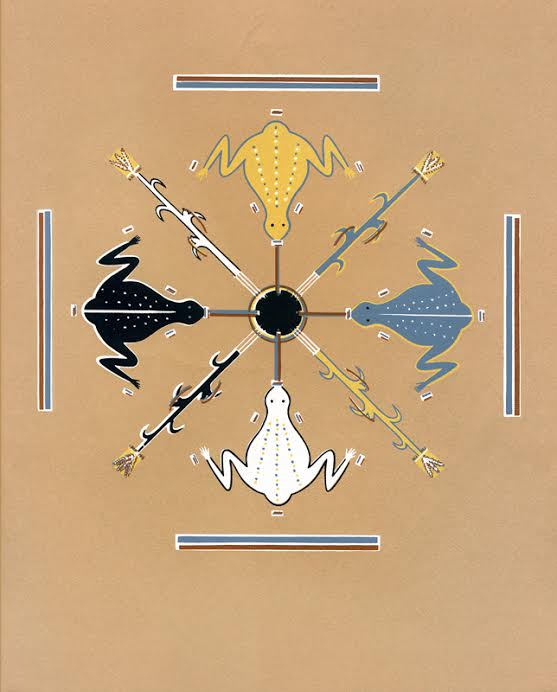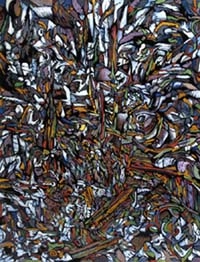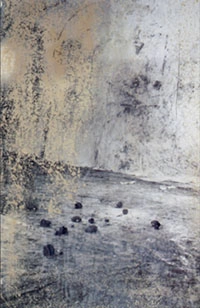ARAS Connections: Image and Archetype - 2009 Issue 2

With this edition, the ARAS Online Newsletter is officially morphing into the ARAS/Art and Psyche Online Journal. You will notice there are two changes in the name of this publication. The first is that ARAS is teaming up with the Art and Psyche Working Group to publish the papers from the "Art and Psyche: Reflections on Image Conference" that was held in San Francisco in May, 2008. The goal of the conference was to create a dialogue between many different kinds of people who are interested in the intersection between art and psychology. Artists were joined by art therapists; art historians were joined by art critics; Jungian analysts were joined by analysts from other traditions. The papers from this conference have been collected and will be published here over time -- slowly so that there is time to digest the wonderfully varied contributions. The second change in this publication's name is that we are now calling ourselves a "journal" rather than a "newsletter." This is a bit ambitious for where we are now, but it reflects our desire to create a forum in which the exchange of ideas and the presentation of articles on the relationship between art and psyche, between art and archetype, and between art from the ages and contemporary art have a chance to mingle in a creative exchange about the interplay of art in culture, religion and psychology.
We are particularly pleased that we are going to be able to offer subscriptions to the new journal at no cost. In a time of economic downturn, free is good. We encourage you to tell your friends and colleagues about this new feature of the ARAS Online site and let them know that they can subscribe for free. We are also very excited that ARAS and the Art and Psyche Working Group have joined in this experiment to create a journal of exchange. It has great promise and with the papers from the Art and Psyche conference it has a great foundation on which to build.
Best wishes,
Tom Singer, M.D.
Co-Chair of ARAS Online for National ARAS
The Abstract Unconscious in Painting

'…it is only as an aesthetic phenomenon that existence and the world are eternally justified…' (Nietzsche. F. 1872)
I will begin by stating that, for me, what takes place in the studio, and subsequent reflections on the activity and its outcomes, appears to be deeply connected to a vital personal need to engage in some form of highly altered state of mind. Such a need is curiously demanding and inevitably complex in terms of potential meaning - being intensely bound up with formal visual issues and imaginative responses to the developing image.
What is becoming clear, as my experience and conscious understanding develops, is that both process and product appear to be driven by inner (perhaps unconscious) needs - needs that are essentially manifested through highly concentrated perceptual fantasies. Such fantasies on face value seem to be, in effect, what I will call 'hermetic constructs' - having no clear symbolic connection to the external world as such or, apparently, any shared cultural connection beyond the obvious one of earlier experiments in modernist abstraction.
In this sense the work appears to be, in practice, intensely introverted – perhaps even bordering on the autistic. That said the imagery does seem to carry a level of aesthetic meaning and value, a value rooted somewhere other than any associations that might be made with shared, externally validated, sources of recognition. What then perhaps needs to be addressed from the outset, concerns what such implied inner needs might be, as it seems that these needs drive the initial intention to physically create an image and to act this out imaginatively through a highly specific process of change and development.
Read the entire paper.
The Visible and the Invisible in Art

"There is a secret stone, hidden in a deep well
Worthless and rejected, concealed in dung or filth
And this stone is a bird, and neither stone nor bird…"
(Mylius, quoted in Jung, 1963, note 441, p. 194)
In certain works of art, the numinous quality comes not through content, likeness to reality, perfection of technique or composition, but rather through the vagaries of the process itself, unfinished and imperfect. The tension of this imperfection is then held invisibly and secretly in the image until the viewer comes along to privately open and engage it in the viewing, and that uncompleted, never ending process comes to life, drawing the viewer into its participatory space. This mysterious quality does not track any direct line through art history, but follows a fine, supple thread, leaping across continents, centuries and even millennia.
Works that capture this quality share an affinity or correspondence that doesn't respect mundane time, space, logic, or personal tastes and aesthetic preferences, but rather, connects to the timeless god-like quality in each of us, that essential being at our very core. We occasionally catch a glimpse of this Being, reflected sometimes in nature, sometimes in art, like the startled and startling gaze of an animal caught unawares, suddenly looking back at us in recognition. The art critic and novelist, John Berger, suggests that to find this "invisible heaven, one must only lift up something as small and as at hand as a pebble…" Quoting Simone Weil, he says "When we know how to turn whatever happens, no matter what it is, into an object of desire…", this desire "pierces through time to find eternity behind it." (Berger, p. 11)
Read the entire paper.
Become a Member of ARAS!
Become a member of ARAS Online and you'll receive free, unlimited use of the entire archive of 17,000 images and 20,000 pages of commentary any time you wish—at home, in your office, or wherever you take your computer.
The entire contents of three magnificent ARAS books: An Encyclopedia of Archetypal Symbolism, The Body and The Book of Symbols are included in the archive. These books cost $330 when purchased on their own.
You can join ARAS Online instantly and search the archive immediately. If you have questions, please call (212) 697-3480 or email info@aras.org
We Value Your Ideas
As our newsletter grows to cover both the ARAS archive and the broad world of art and psyche, we're eager to have your suggestions and thoughts on how to improve it. Please send your comments to info@aras.org. We look forward to your input and will reply to every message.
Subscribe
If you're not already a subscriber and would like to receive subsequent issues of this newsletter by email at no cost, e-mail us at newsletter@aras.org.
